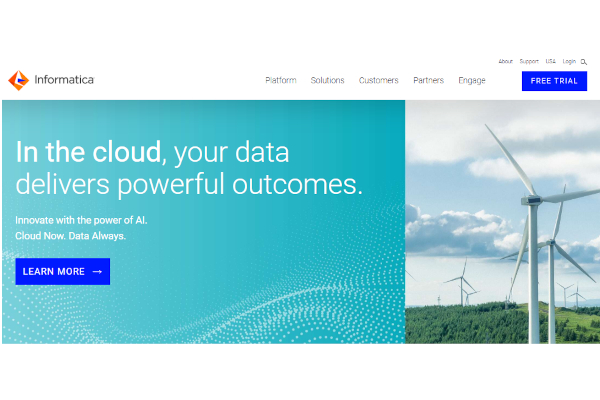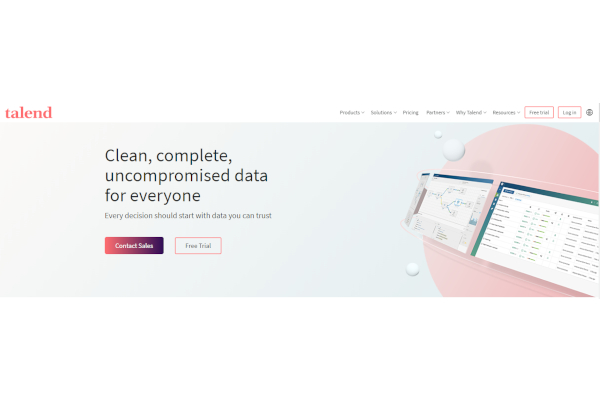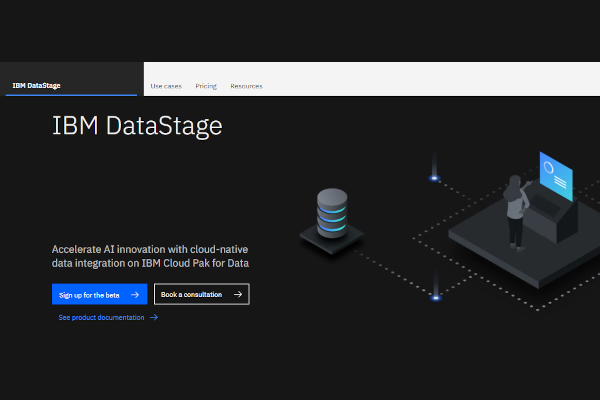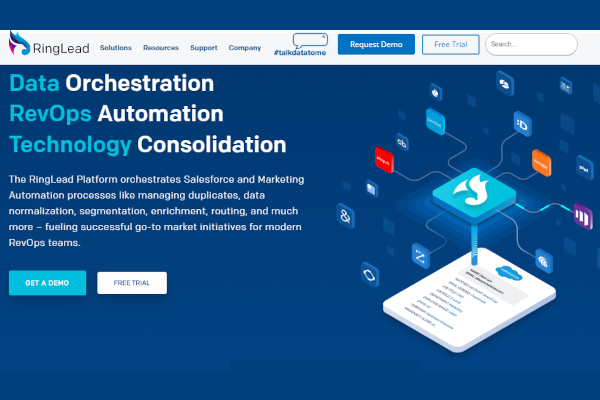Data is an organization’s lifeblood and the key to its commercial success. You’ve probably heard these words from a conference speaker or seen headlines with similar content online. But it is what it is: to complete a task or provide a service, you must rely on accurate data, whether you’re planning an optimal route to deliver sushi to a large number of customers or sending customized newsletters. In the first case, you’ll require accurate order details. Customers must be segmented in the second case based on their activity and interests. To do so, you’ll need to gather and analyze relevant data, which will take time and effort.
11+ Best Data Quality Software
1. Informatica
2. Talend
3. IBM InfoSphere DataStage
4. Precisely
5. Oracle Data Quality
6. SAP Data Quality Management
7. Ringlead
8. Data Ladder
9. OpenRefine
10. Tibco
11. SAS Data Management
What is data quality?
The degree to which data meets the standards of excellence or expectations of users is referred to as data quality. High-quality data is quickly processed and interpreted for various purposes, including planning, reporting, decision making, and operation. It is critical because it aids in the improvement of data quality, which results in improved decision-making across an organization. The more reliable the data, the more confident you can be in your judgments. Effective data management reduces risk and can result in consistent performance improvements.
How To Implement Data Quality?
Data quality management is a collection of practices to enhance and sustain data across a business’s divisions. The purpose of these steps is to become proactive in monitoring the health of data rather than reactive in addressing flaws as they are discovered and dealing with the resulting consequences. Let us examine each of these five stages and the processes that occur while utilizing these.
1. Define the effect of low-performance data through an evaluation of data quality.
Firstly, the data quality analyst reviews data to identify possible problems causing delays in specific transactions and reducing revenues and margins. The qualitative data review provides a fundamental understanding of the significant business process impacts of data defects. The expert then outlines requirements for data quality and critical dimensions for data quality present in a company. The team then starts evaluating the quality of data through up and down approaches. The top-down system allows people to learn how data are created and utilized by employees and which data-related problems they face along the way.
Data evaluation also helps to define activities that are most affected by insufficient data. While the bottom-up approaches make extensive use of statistical and data analysis tools and techniques, such as data profiling. Remember that the analysts for data quality can look at how data is organized in databases, interviews with users, or arrange surveys that allow users to document problems.
2. Defining data quality metrics and rules
To begin, data quality analysts compile data evaluation results, concentrating on data elements that appear to be essential based on the user’s particular needs. Then, using established business rules, DQ analysts compare business impacts with data flaws. Thus, specialists determine the metrics used to ensure data is sufficiently reliable and usable for organizational or analytical purposes. They work with data users to assess the acceptability of metric ratings. Data with lower-than-acceptable metric scores do not meet consumer standards and must be updated to affect operations negatively. By integrating acceptability thresholds and measurement methods, data quality metrics can be described.
3. Establishing data standards and guidelines
When the effects of insufficient data are identified, data is examined, data quality rules and measurements are clear, it is time to introduce quality improvement techniques and activities. Therefore, this phase aims to document unified standards for the use of data and metadata throughout the data cycle.
4. Implementing standards for data quality and data management
The data quality team then implements documented data quality standards and processes before managing solid data quality throughout its lifecycle. The team can host meetings to educate employees about the new data management rules or create a business glossary. This document contains common terminology approved by stakeholders and managers. Additionally, the data quality team members can train employees to use a data quality tool for remediation, whether custom-built or off-the-shelf.
5. Monitoring and correction of data
Data cleaning entails detecting and removing erroneous or incomplete records from data. Data preparation can be done in various ways, including manually, automatically with data quality tools, batch processing via scripting, data migration, or combining these methods.
FAQs
What is your definition of data quality?
Data quality measures data conditions based on accuracy, completeness, uniformity, reliability, and up-to-date information.
What are data quality metrics, and what do they mean?
The metrics you use to assess the quality of your business data are known as data quality metrics. They evaluate the usefulness and relevance of your data, allowing you to distinguish between high-quality and low-quality data.
What is the significance of data quality?
Improved data quality results in more informed decision-making throughout the organization. The more reliable the data, the more confident you can be in your judgments. Effective data management reduces risk and can result in consistent performance improvements.
According to experts, a data quality management strategy consists of people, processes, and tools. Once people understand what constitutes high-quality data in their industry and organization, what steps must be taken to ensure that data can be monetized, and what tools can supplement and automate these actions and activities, the initiative will produce the desired business results.
Data quality dimensions serve as a starting point for developing data quality rules, metrics, defining data models, and establishing standards that all employees must adhere to when entering a system record or extracting a dataset from a third-party source. Another essential requirement for proactive data quality management is continuous monitoring, interpretation, and data enhancement.
Related Posts
10+ Best Chemical Software for Windows, Mac, Android 2022
12+ Best Vulnerability Scanner Software for Windows, Mac, Android 2022
4+ Best Bundled Pay Management Software for Windows, Mac, Android 2022
10+ Best Trust Accounting Software for Windows, Mac, Android 2022
10+ Best Patient Portal Software for Windows, Mac, Android 2022
13+ Best Virtual Reality (VR) Software for Windows, Mac, Android 2022
12+ Best Bed and Breakfast Software for Windows, Mac, Android 2022
15+ Best Resort Management Software for Windows, Mac, Android 2022
14+ Best Hotel Channel Management Software for Windows, Mac, Android 2022
12+ Best Social Media Monitoring Software for Windows, Mac, Android 2022
10+ Best Transport Management Software for Windows, Mac, Android 2022
10+ Best Other Marketing Software for Windows, Mac, Android 2022
10+ Best Top Sales Enablement Software for Windows, Mac, Android 2022
8+ Best Industry Business Intelligence Software for Windows, Mac, Android 2022
10+ Best Insurance Agency Software for Windows, Mac, Android 2022











